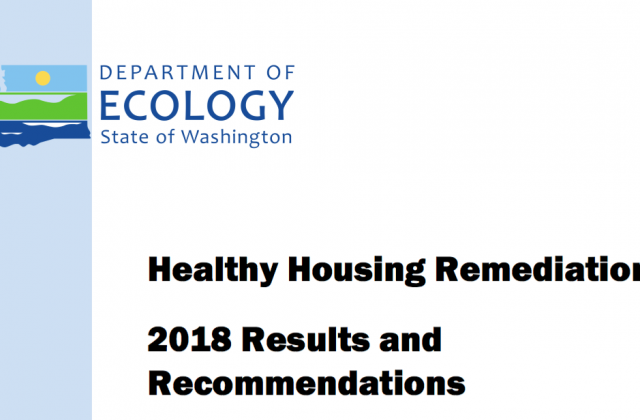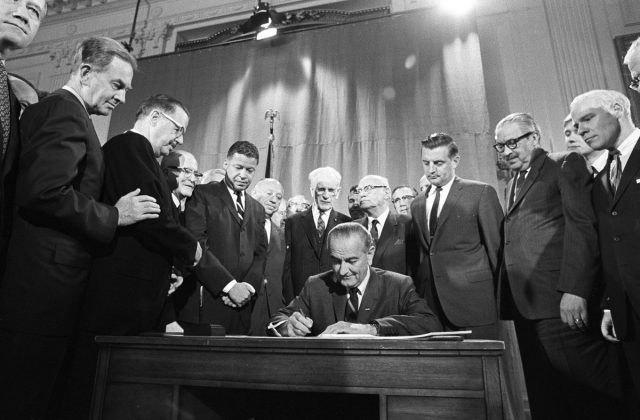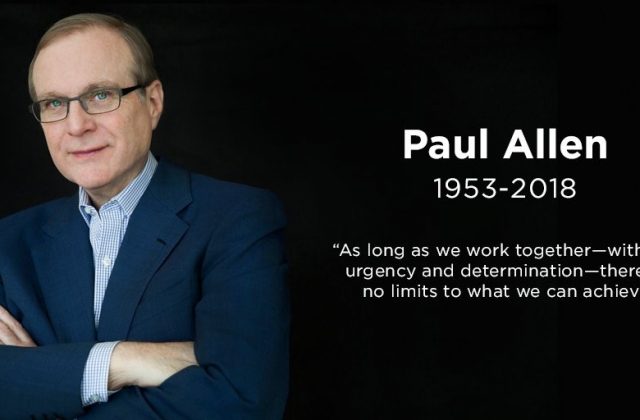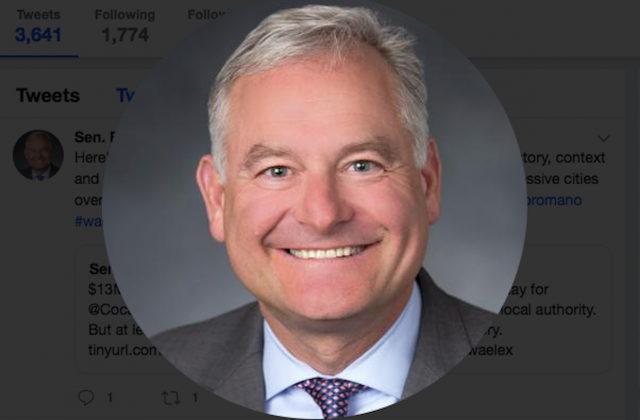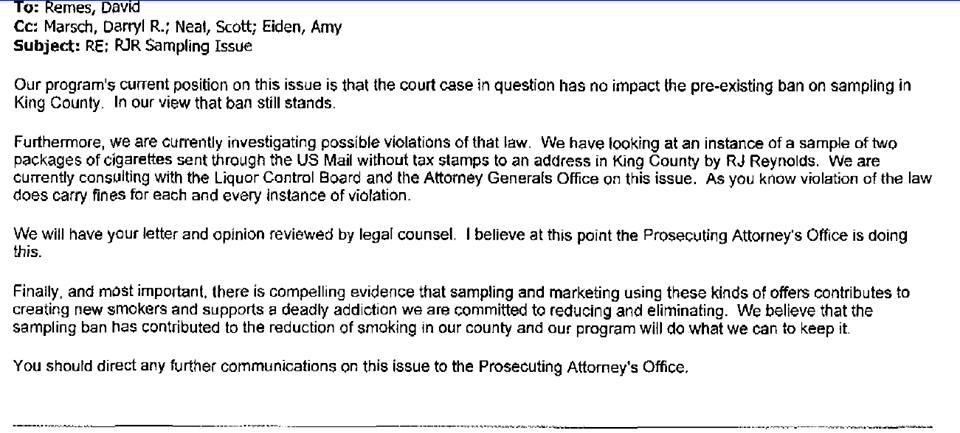The Economics of Contamination: Another Cost Driver for Housing
As I pointed out on the Seattle Channel for buildings needing seismic upgrades, what drives the use of a site or buildings is the economics of the site. That’s different than the oft cited “profit” that activists for the status quo site as the motivator for use. There must be a return for investors. That’s why it’s called an investment. But when the economics of a site don’t work for redevelopment, usually the use stays the same. In the case of Showbox, the best use is housing. Alternatively, if money can be found to make seismic upgrades, the theater use might make sense. What about contaminated sites, places where there is significant remediation needed that makes housing infeasible. There is an answer suggested in a program from the Department of Ecology.
Last session the legislature passed Engrossed Substitute Senate Bill (ESSB) 6095 directing the Department of Ecology to develop a program to assist with these cleanups. Here’s the problem statement from the full report.
Cleaning up contamination on sites with potential for use in affordable housing can provide another means to relieve the pressures on public housing while preserving existing communities. Even the investigatory stages of cleanup can prove expensive and difficult to finance. The cost of cleanup affects the cost of development and may contribute to higher purchase prices or rents for new tenants, home buyers, and customers. This added cost, combined with other factors driving up property value, can lead to displacement and disruption of existing communities. The pilot proposed in this report aims to help communities that have lived with contamination enjoy the benefits of its removal and share in the benefits of the wave of redevelopment already impacting their lives (emphasis is mine).
When the people through the law determine certain things are unsafe, they often make laws that restrict or mandate behavior. In the case of seismic upgrades, the law mandates upgrades as uses change or renovations happen. If you’re going to change a building, lots of new requirements kick in.
With contamination, the determination is that an old truck parking lot, for example, has lots of toxins leaked into the soil. Maybe the property has big tanks with residual chemicals that are hazardous. That soil and those tanks need to be removed according to the law. But the law doesn’t provide the money for private parties to pay for that remediation; so the contaminated land with the tanks stays just that, vacant contaminated, and underutilized land.
What’s problem and a possible answer? From the report:
Cleanup costs may contribute to higher purchase prices and rents for future owners and leaseholders. The economic impact of these costs can affect housing and local communities in two major ways:
1) Prices for goods, services, and housing rise to meet these higher development costs.
2) Higher costs may displace existing communities and residents. Many of the places thathave suspicion of, or confirmed, contamination have provided low-income communities, and working families, affordable places to live as Washington’s economy has grown.
State grants can provide money to offset the cost of investigation and cleanup. Combining these grants with requirements to build affordable housing can help provide homes and apartments in more affordable price ranges (emphasis mine).
Yes, I know. You’ve heard me say over and over again that more money is not the answer. Well, in general it isn’t. Simply dumping more and more money into the Housing Trust Fund without addressing costs — like remediation of contaminated sites — doesn’t make sense. But Ecology has started the work. That’s why we’ve recommended in our reform package an allowance for Housing Trust Fund dollars to be used for clean up and remediation. This doesn’t just have to be for non-profit sites but for any site that has been fallow for years because the costs are just too high.
If we believe the regulations are good and based on strong science and that people will be harmed without remediation, then we have to realize that has an economic cost; the land won’t be useful for housing unless that housing is expensive enough to rationalize — that is, absorb — the costs of remediation. The math is simple, if we want the price of that housing to be lowered, then we must contribute to the clean up. Otherwise, the site will stay a parking lot. This is a big deal for housing, and I hope the legislature gets it and creates a program that leverages the Housing Trust Fund for this purpose, especially in rural areas that haven’t received funding.
Seattle For Growth on the Seattle Channel: Smart Solutions Needed for Showbox, URMs
Last week I had the opportunity to push back on the notion that the only way to “save” the Showbox theater downtown is to slap a historic designation on it. This makes absolutely no sense. The problem with the Showbox venue — and old brick building downtown slated for demolition to make way for housing — isn’t one of housing versus preservation of a much loved venue. It also isn’t a battle between Seattle’s past and Seattle’s future. The problem and the story is about chronic inaction by the Seattle City Council and Mayor on Unreenforced Masonry buildings, otherwise known as URMs. There are hundreds of these buildings all over town that need upgrades to make them safe. The Showbox is an indicator species of a greater extinction of these buildings unless something is done.
Briefly, my point is that the economics of retrofitting older buildings makes doing that almost impossible. The truth is that an old brick building does have value simply because it is old and because it is brick. It is cool. People want to go inside and do stuff in there like live, watch shows, or have an office. However, brick doesn’t respond well to earthquakes. Bricks don’t bend, they break. So there is the problem. Can the cool uses in that old brick building generate enough money to pay for the big retrofits to “save” the building. The answer is almost always “No.” Coffee shops, concert venues, and other retail uses simply can’t cover that cost. Office and housing might, but it will be pricey.
The most rational way, then, to make these buildings safe is to demolish them. That is unless there is someway to bring money to the table. If this was entirely within the realm of private finance, I might argue that the public at large has little or no interest in spending money to rehabilitate a private asset that would be best torn down. However, in the case of URM, there is a compelling interest not just in preserving old stuff, but in keeping people safe and maximizing economic benefit.
Here’s what the City could do to resolve this issue. Identify all URMs that represent danger to people in and around them, and:
- Mandate the demolition of those buildings;
- Buy them, rehabilitate them, then sell them;
- Mandate that all the buildings be brought up to safe standards by a date certain;
- Pay for upgrades;
- Create a Transfer of Development Rights (TDR) program to capture the value of the capacity on the site, use that money for rehabilitation, and put the potential housing somewhere else (here’s a good explainer of TDR);
- Create a TDR program along with some public financing for improvements;
- Have meetings, talk about it, and do nothing and expect the private sector to pay for everything; or
- Grandstand and declare some buildings “historic” based on their use.
The City has essentially done the last two. That’s what’s doomed the Showbox, not some fable about the new versus the old. Those other things would take actual work. Someone would have to sit down and think about it, do some math, and then pass legislation and deal with the variables and potential ups and downs. That’s just too hard for City Hall. And besides, they have bunches of people working on how to tax new housing, fighting law suits against other bad policies, and there are so many speeches to give and ribbons to cut. It’s far easier to bemoan the “loss” of the Showbox and declare war on the private sector.
The truth is that the Showbox will fail at that location, period. It will not continue to operate there under the current circumstances if nothing changes. Second, if the historic designation is successful, the failure of the use will simply happen sooner, and the building would likely become <diabolical laughter> a We Work! The reason is about economics; seismic upgrades are seriously expensive and if the use can’t pay for them (either because it doesn’t generate enough money or can’t because of the limits of the site), then the building will remain underutilized, or padlocked and filled with boxes. We can save the Showbox. But sometimes I think Seattle prefers the drama to actual solutions.
But woe is you, Seattle, if you fail to heed the warnings of Laocoön and Cassandra. Sigh. But you always do. Maybe we can have a meeting about it the We Work Showbox in a couple years. See you there!
Here’s the video
Comments on the Fair Housing Act
I posted earlier about the comments I was putting together for the Department of Housing And Urban Development as they consider changes to the implementation of the Fair Housing Act. I’ll write more later about where this process goes, the history and future of the act, and what role the federal government might play in restoring some sanity to our housing discussion. But I’ll let these comments speak for themselves now.
I am submitting these comments on behalf of the Foundation for Research on Equal Opportunity (FREOPP). All FREOPP research considers the impact of public policies and proposed reforms on those with incomes or wealth below the U.S. median. Housing policy should favor solutions that are fair, efficient, and increase housing supply. We support more housing of all kinds in every neighborhood for people of all levels of income.
Introduction
Denying access to housing based on race is unacceptable and inconsistent with American and basic moral principles of fairness and equal opportunity. The Fair Housing Act (Act) enshrined these principles in 1968, and the implementation of the Act over the years has made strides toward eliminating discrimination in housing access.
But this progress has hit a hard barrier: the economic interests of incumbent homeowners have taken precedent over the need for more housing, especially in thriving, prosperous, and growing cities.
The intention of the Act – fairness – has been undermined by housing scarcity created by local governments seeking to protect the rising value of investments in single-family housing by restricting housing supply with rules, regulations, and taxes. Less housing means existing property owners see their investment rise.
However beneficial this is to people who are already housed, when housing is in short supply, prices and rents go up, consuming a greater share of household income. This, of course, disproportionately impacts households with less money. People of color in the United States own more poverty than white people; a Kaiser Family Foundation analysis of Census data found that 22 percent of black families and 20 percent of Hispanic families are in poverty compared to 9 percent of white families.
Therefore, restrictive land use and housing policies are, in fact and practice, discriminatory housing policy. Each and every limit or slow down of housing supply enacted by local government that is not for purposes of health and safety of residents or the community will mean higher prices, and those higher prices hurt families of color harder than white families.
Furthermore, ameliorating these restrictive policies through subsidies is unacceptable; buying down the high price of housing created by policies deliberately aimed at limiting housing supply means families with less money must wait in longer and longer lines for vouchers or units. Today’s system of off setting high prices with subsidies is a modern day iteration of separate but equal, two systems of housing, one for people who already own their homes and one for everyone else. The problem is, however, that the two systems aren’t equal at all, one serves incumbent homeowners and the other inefficiently distributes public funding for housing to people who have less money.
So as the Department of Housing and Urban Development (HUD) considers changes to the Affirmatively Furthering the Fair Housing Act (AFFHA) Regulations it must take into account the current state of local regulation: local governments are imposing restrictions on housing, calling the resulting shortage a crisis, then squeezing money for subsidies to off set the consequences of those restrictions. Not only is this illogical, it is unfair and discriminatory.
Approach
Going forward, HUD should emphasize outcomes for local governments rather than plans. We suggest considering an approach like the one offered by the Mercatus Center in comments by Salim Furth and Emily Hamilton. Using HUDs existing Fair Market Rent (FMR) calculation, growing cities that have rents that have risen faster than inflation over the last 5 years and have issued building permits for less than 5 percent net growth in housing units would not be eligible for Community Development Block Grants (CDBG).
Local communities also should consider and be allowed to use CDBG funds to reduce cost burden with direct subsidies to families under 30 percent of Area Median Income (AMI). These families and individuals are already housed, and direct cash assistance would help those families faster.
Jurisdictions seeking CDBG funding should have a list and proposed legislation or rule changes that would safely reduce burdens on housing supply by lowering costs and time to market as part of their application.
Conclusion
Funding from the CDBG program should be exclusively given to local jurisdictions that measure housing issues using established FMR and market data to analyze price trends, the impact that regulation has on prices, establish serious efforts to roll back and eliminate regulation that limits supply, and proposes models for subsidy dollars that are not reliant on capital expenditures but investment in reducing poverty and creating improved access to economic opportunity for families.
Dear Paul, Thank You!
Dear Paul,
We never met. Your money supported my work early on. Then we kind of broke up. I mean, your people supported a policy I didn’t support. Whatever.
Years ago, I was campaign manager for a City Council candidate that supported the Seattle Commons. That was your plan to create new development and a big park, common space for everyone. A great vision. I didn’t get it back then, but it sounded good.
It died.
Then that idea got voted down twice. Now I realize what fools we were. You went ahead and created the South Lake Union we know now, a global hub of innovation and development of new ideas. Yes, lots of wealth, but also lots of benefit.
Your Vulcan company has been mischaracterized over and over again. My guess is that you cared more about sports and brain science than vacancy rates in a building you owned.
You weren’t the billionaire anyone in this town wanted. They wanted and thought you tipped the scale. You didn’t. I wish you had. One lunch or one dinner or a few drinks and I think I could have turned you around. You’d have made a big show of punishing Seattle for its stupid land use and housing policies after I had persuaded you. But you were never the big time developer goon some people thought you were.
But I’m a small thinker. I think about today’s problems. My problems. This one city’s problems.
I feel like you had a bigger vision. Money was a way of making that happen. It was all mixed together. Innovate. Benefit. Innovate. The smarter and more innovative you are, the more money you make. Lots of people resent that.
That doesn’t matter now.
Thank you for the commons idea. Thank you for all the other things you did. You turned ideas into wealth. You turned wealth into innovation. You’re gone way too soon. But we’re all just behind you a bit as always.
Democrats and Preemption: The Looming Threat of Rent Control
You might remember a post from earlier this year of an e-mail I sent to Senator Jamie Pedersen. The Senator said publicly that he thought rent control is a bad idea and acknowledged it doesn’t work to help people struggling with housing costs. But then he said he would support HB 2583, a bill that would, if it passed, removed the state level preemption on local jurisdictions enacting rent control policies. At the time, I pointed out that it wasn’t a question of if Seattle would enact rent control but when. The Council has already said that it supports the removal of preemption and Mayor Jenny Durkan has been unclear on her stand on the issue. Another Democratic Senator is sending signals that should worry opponents of rent control; Senator Reuven Carlyle is supporting the tax on sugar in sodas by heavily touting local control, and calling out all the bad motives behind preemption. Like Pedersen, he’s playing a dangerous game.
Carlyle has taken to Twitter making it clear he supports the ability of Seattle to slap a tax on sugar in soft drinks. But he’s putting a lot of weight on the issue being about preemption.
The paper he points to is a good one in the sense that it puts in one place the narratives of many efforts by state governments to limit what locals can do. This is just a fact. It happens all the time. Here’s a good paragraph, sort of the punchline of the article.
When state and federal leaders fail to act on important social and economic issues, local governments often step into the breach, passing legislation that reflects local conditions, needs, and desires. This has certainly been the case over the last two decades, with progressive local governments adopting living-wage requirements, smoke-free ordinances, local gun regulations, LGBT rights and protections, undocumented immigrant sanctuary policies, local healthcare requirements, and much more.
That first line is critical. But let’s turn it around for a minute.
When local leaders fail to act on important social and economic issues, state governments often step into the breach, passing legislation that reflects broader conditions, needs, and desires.
You see, it all depends on where you stand on various issues. I was the target of a saber rattling letter by RJ Reynolds over the issue of our local law banning the sampling of tobacco products. I opposed preemption by the state of this law because we were keeping addictive product out of the use of young people who would end up suffering the health consequences. It was a good law.
The tobacco lobby had the upper hand in Olympia. Again and again we made the case that the legislature should overturn the state’s preemption on banning smoking in public places. In the end we failed, but an overwhelming vote of the people meant we got the ban. That was just half the headache. Then came enforcing it, when I was called the “Poster Child of the Nanny State.” Remember that? Probably not.
I’ve been doing this stuff a long time. Long enough to know that a rigid support of local control is a bad idea. Yes, the concept of allowing locals to make policies that reflect their values makes sense. But it all comes down to whether we look at those values and whether they pencil out. In the case of smoking bans and sampling bans, mass produced tobacco is a highly engineered product designed to addict people for money. There is no safe level of use of mass produced corporate tobacco. None. Tobacco companies should be forced purchased by the federal government, and the product only sold in plan brown wrappers with a prescription from a doctor. Still think I’m a libertarian?
But rent control is an almost equally horrible thing to foist on to a community. While it does not kill people, it creates human suffering, devastating local housing markets by disincentivizing new housing, creating rationing for existing housing, and contributing to a general break down of maintenance and housing supply. Yet the Seattle City Council would enact it in a heartbeat if they could. The issue of preemption simply must be argued issue by issue, not as a blanket ideological one. Yes, sometimes good local laws are stymied by really bad legislative action at the state level. But sometimes, coherent and thoughtful legislative bodies are the only thing standing between ideologically deranged local governments from enacting really bad ideas, like rent control. It will be up to moderate Democrats like Carlyle to balance local control and preemption to save Seattle from itself.
